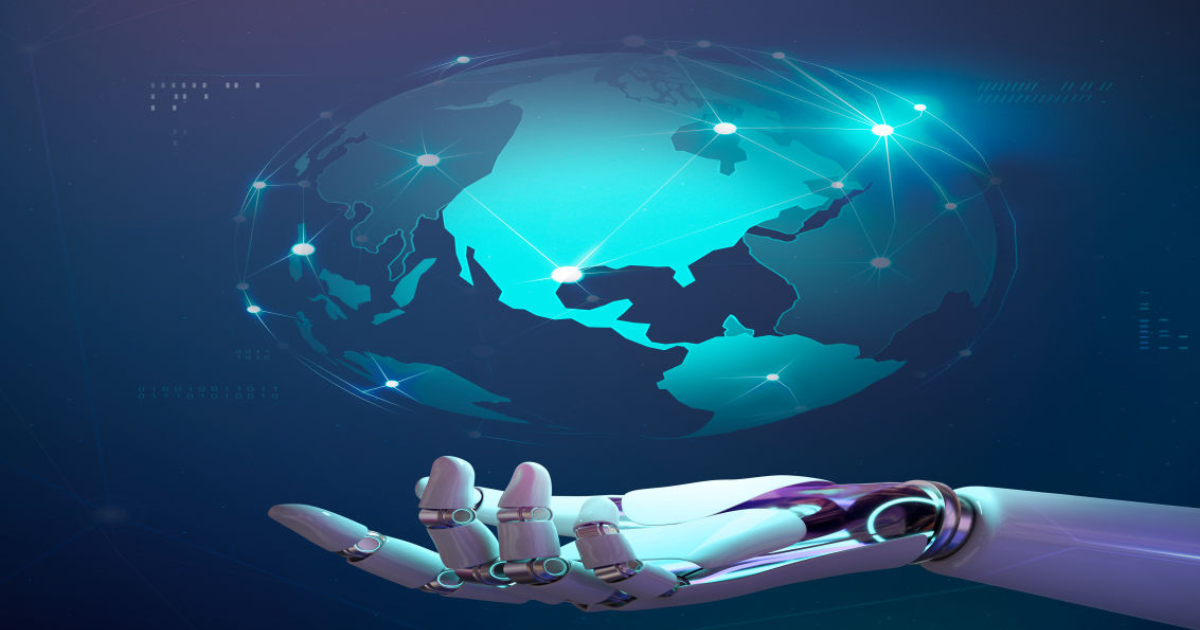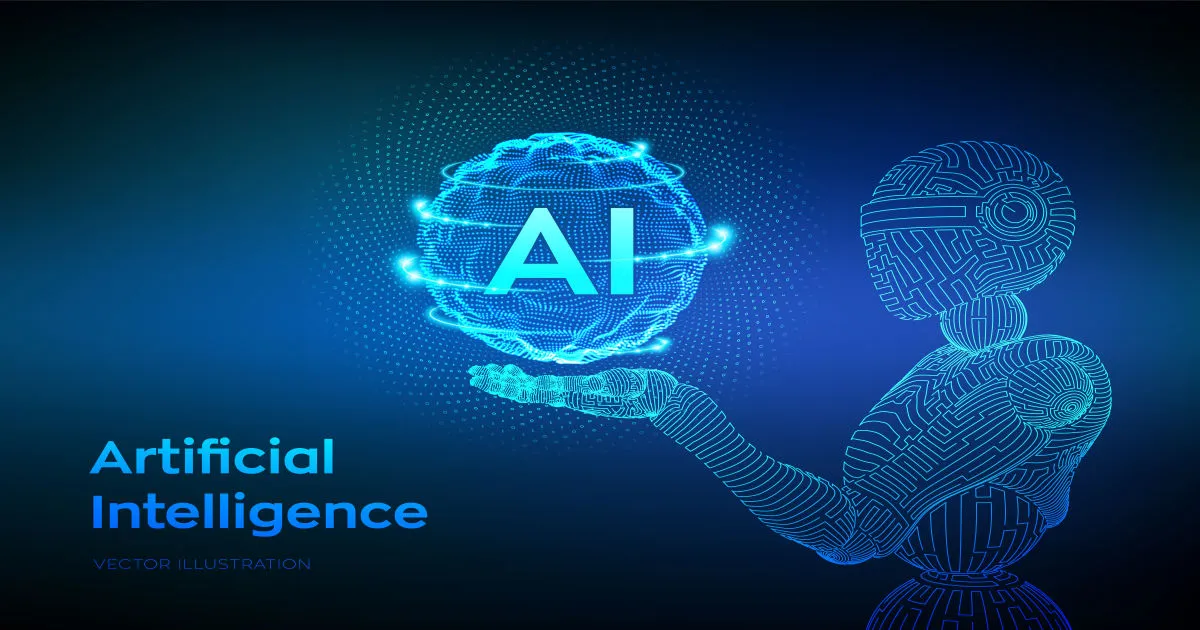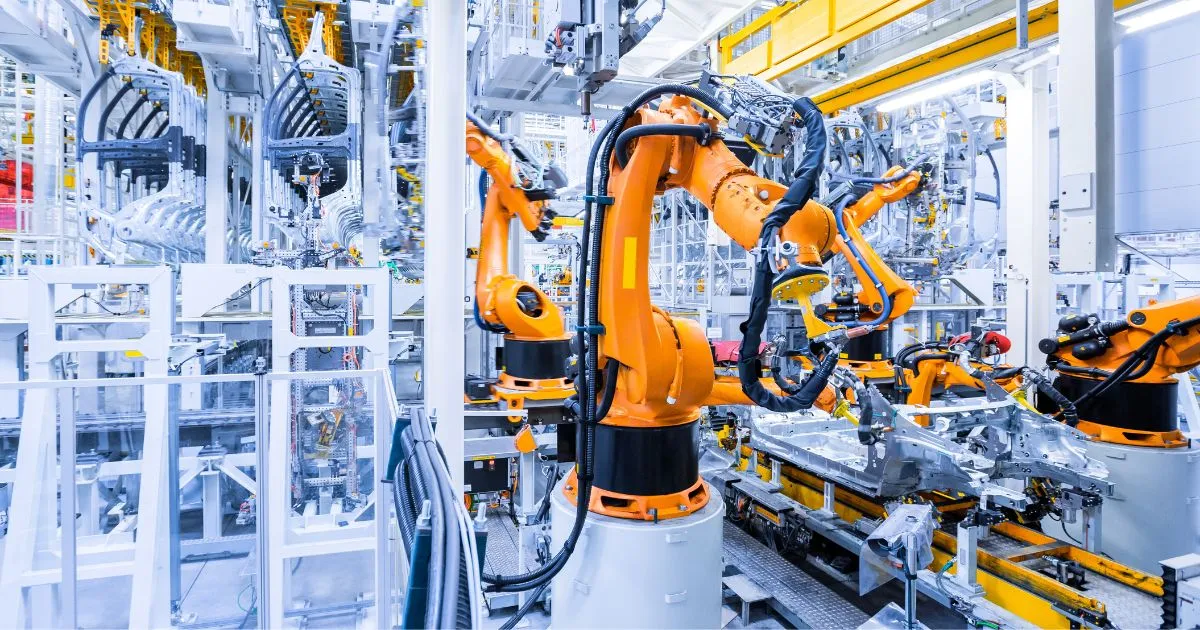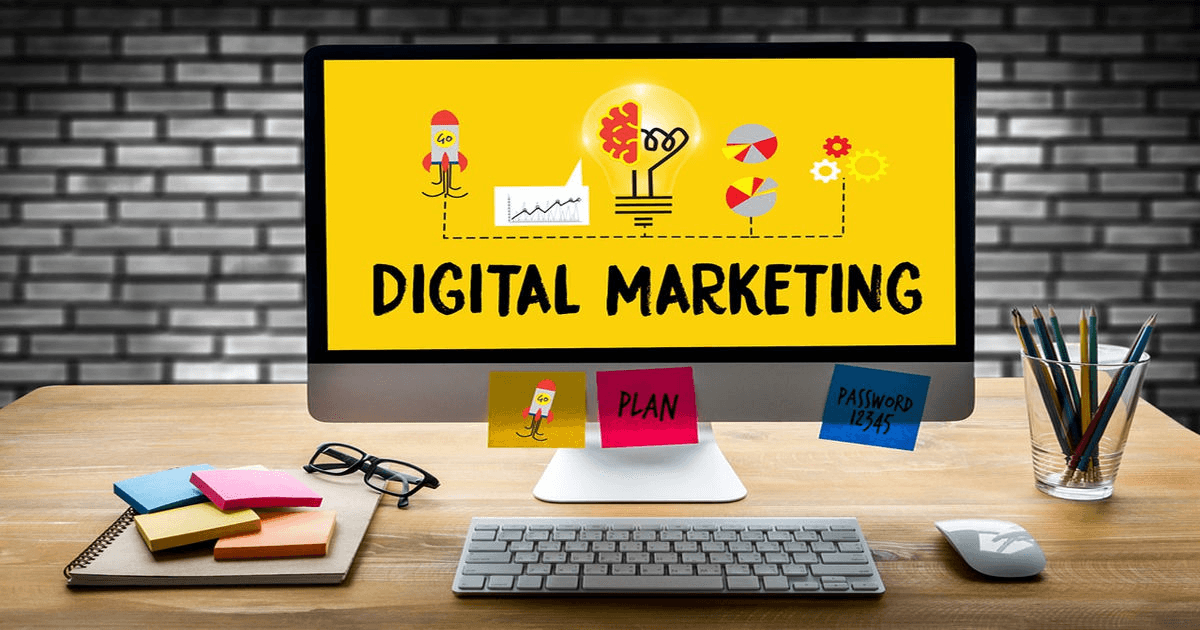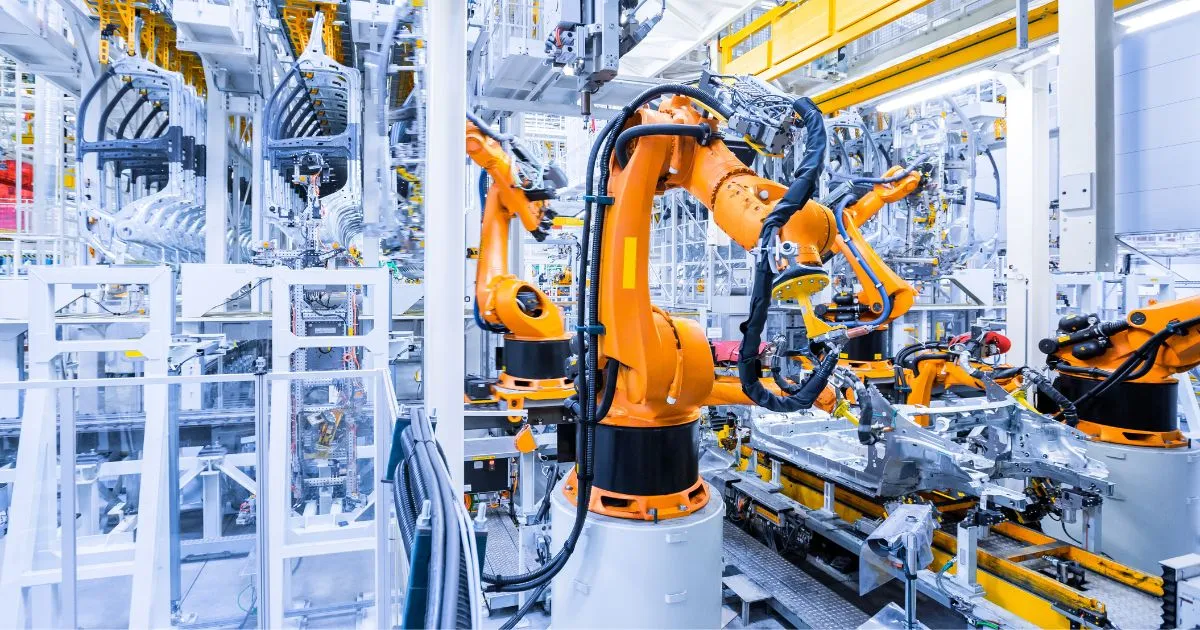Will Technology Replace Humans? HELLO! In This Blog We Will Talk About That Will Technology Replace Humans? MEANING- It is the application of scientific knowledge for a practical purpose. It is also known as the use of modern technology to enhance growth. The methods of using scientific discoveries for practical purposes. MAIN PURPOSE OF TECHNOLOGY-The purpose of technology is to meet a human need or solve a human problem. Technology can help meet many types of human needs, like needs of shelter, food, clothing, and communication. Technology does not originate from the natural world and includes methods or activities that people use to alter their environments. Technology is man-made, and creating tools as technology has been a part of humanity for millions of years. WILL TECHNOLOGY REPLACE HUMANS– Technology will never replace humans but they have the potential to make us more effective. HOW DOES TECHNOLOGY HELP IN REDUCING BUSINESS COSTS? Technology offers various ways to reduce business costs and will technology replace humans across different industries and functions. Here are some ways technology can help: Automation: Technology can automate repetitive tasks, the technology will replace humans? manual labor and associated costs. This includes automating processes such as data entry, inventory management, invoicing, and customer service. Such Type Of Automation technology will replace humans. Remote Work: With advancements in communication technology, businesses can now allow employees to work remotely, reducing costs associated with office space, utilities, and commuting. Remote work also allows access to a broader talent pool, potentially reducing labor costs. Marketing and Advertising: Digital marketing platforms offer targeted advertising options, allowing businesses to reach their desired audience more effectively and at a lower cost compared to traditional advertising methods. Data Analytics: By leveraging big data analytics, businesses can gain insights into their operations, customer behavior, and market trends. This enables them to make data-driven decisions, optimize processes, and identify cost-saving opportunities. Which technology is good for the future and it will replace human beings? The future is challenging due to the rapid pace of innovation and unforeseen developments. However, several emerging technologies show significant promise for shaping the future:- Artificial Intelligence (AI) and Machine Learning: AI and machine learning algorithms are becoming increasingly sophisticated, enabling automation, data analysis, personalization, and decision-making across various industries, from healthcare to finance to manufacturing. Augmented Reality (AR) and Virtual Reality (VR): AR and VR technologies are transforming the way we interact with digital information and experience the world. They have applications in gaming, education, training, design, and remote collaboration. Biometric Technologies: Biometric authentication methods such as facial recognition, fingerprint scanning, and voice recognition are increasingly being used for security and identification purposes in various industries, from banking to healthcare to travel. DIGITAL MARKETING FOR THE FUTURE-Digital marketing technology refers to the various tools, platforms, and software applications utilized by marketers to plan, execute, analyze, and optimize their online marketing efforts. These technologies enable marketers to reach their target audience, engage with customers, and drive desired actions (such as conversions or sales) through digital channels. Will technology make people smarter? Technology can serve as a powerful tool to facilitate learning, access to information, and cognitive development, which can contribute to individuals’ overall intelligence. Here are some ways technology that will replace human beings: Access to Information: The internet provides instant access to a vast amount of information on virtually any topic. With search engines, online databases, and educational websites, people can quickly find answers to their questions, explore new subjects, and deepen their understanding of various concepts. Educational Resources: Technology-enabled learning platforms, such as online courses, tutorials, and educational apps, offer flexible and interactive ways to acquire new skills and knowledge. These resources often incorporate multimedia elements, simulations, and adaptive learning techniques to engage learners and facilitate retention. Language Learning Apps: Language learning apps and platforms leverage technology to provide interactive lessons, pronunciation practice, vocabulary drills, and cultural immersion experiences. These tools can accelerate language acquisition and proficiency by offering personalized instruction and feedback. Critical Thinking and Problem-Solving: Educational games, puzzles, and simulations can stimulate cognitive processes such as critical thinking, problem-solving, and decision-making. These interactive experiences challenge individuals to apply their knowledge, analyze information, and develop effective strategies to solve complex problems. FOR MORE BLOGS CLICK HERE How Technology Changed Our Lives And Will Technology Replace Humans? Technology has transformed nearly every aspect of our lives, revolutionizing the way we communicate, work, learn, and interact with the world around us. Here’s a breakdown of how technology has changed our lives:- Communication: The advent of the internet, smartphones, and social media has revolutionized communication. We can now instantly connect with people around the globe through email, messaging apps, video calls, and social networking platforms. Distance is no longer a barrier to staying in touch with friends, family, and colleagues. Work and Business: Technology has transformed the way we work and conduct business. From email and collaboration tools to project management software and video conferencing platforms, digital tools enable remote work, streamline workflows, and facilitate global collaboration. E-commerce platforms and online marketplaces have reshaped the retail landscape, allowing businesses to reach customers worldwide. Education: In the field of education, technology has revolutionized teaching and learning. Interactive whiteboards, educational apps, and online learning platforms offer engaging and personalized learning experiences. Students can access lectures, textbooks, and study materials online, allowing for flexible and self-directed learning. Entertainment: Technology has expanded our entertainment options. Streaming services like Netflix and Spotify provide access to a vast library of movies, TV shows, and music on-demand. Video games, virtual reality experiences, and augmented reality apps offer immersive entertainment experiences that were once unimaginable. Healthcare: Technological advancements have transformed healthcare delivery and patient care. Electronic medical records, telemedicine platforms, and wearable devices enable remote monitoring, diagnosis, and treatment. Precision medicine, genomics, and personalized healthcare approaches are revolutionizing disease prevention and management. Transportation: Technology has revolutionized transportation with innovations like ride-sharing apps, electric vehicles, and autonomous driving technology. Navigation apps provide real-time traffic updates and optimize routes for efficiency and convenience. Smart infrastructure and IoT sensors improve safety and traffic management in cities. FOR MORE BLOGS CLICK HERE
The future of AI
The future of AI HELLO! In this blog we talk about the future of AI. The Future Of AI(ARTIFICAL INTELLIGENCE), is the ability of a digital computer or computer-controlled robot to perform tasks commonly associated with intelligent beings. The term is frequently applied to the project of developing systems endowed with the intellectual processes characteristic of humans, such as the ability to reason, discover meaning, generalize, or learn from past experience. Since the development of the digital computer in the 1940s, it has been demonstrated that computers can be programmed to carry out very complex tasks—such as discovering proofs for mathematical theorems or playing chess—with great proficiency. Still, despite continuing advances in computer processing speed and memory capacity, there are as yet no programs that can match full human flexibility over wider domains or in tasks requiring much everyday knowledge. On the other hand, some programs have attained the performance levels of human experts and professionals in performing certain specific tasks, so artificial intelligence in this limited sense is found in applications as diverse as medical diagnosis, computer search engines, voice or handwriting recognition, and chatbots. The future of AI(Artificial intelligence) is the theory and development of computer systems capable of performing tasks that historically required human intelligence, such as recognizing speech, making decisions, and identifying patterns. AI is an umbrella term that encompasses a wide variety of technologies, including machine learning, deep learning, and natural language processing (NLP). Although the term is commonly used to describe a range of different technologies in use today, many disagree on whether these actually constitute artificial intelligence. Instead, some argue that much of the technology used in the real world today actually constitutes highly advanced machine learning that is simply a first step towards true artificial intelligence, or “general artificial intelligence” (GAI). Yet, despite the many philosophical disagreements over whether “true” intelligent machines actually exist, when most people use the term AI today, they’re referring to a suite of machine learning-powered technologies, such as Chat GPT or computer vision, that enable machines to perform tasks that previously only humans can do like generating written content, steering a car, or analyzing data. FOR MORE BLOGS CLICK HERE WHAT TECHNOLOGY USED FOR AI The future of AI(Artificial intelligence) relies on a variety of technologies to simulate human-like intelligence and perform tasks that traditionally require human intelligence. Some key technologies used for AI include and what technology used for AI: What is ChatGPT? ChatGPT is a powerful artificial intelligence bot developed by OpenAI. Its makers Altman, Musk, and other Silicon Valley investors created an artificial intelligence research non-profit organization in 2015 and unveiled it to the world on 30th November 2022. ChatGPT is Chat Generative Pre-Trained Transformer. It is a powerful AI bot that is capable of understanding human speech and producing in-depth w riting that is easily understood by humans. The question-answer format use in ChatGPT makes it interesting.
Medical Robots Transforming Healthcare
Medical Robots Transforming Healthcare In This Blog We Talk Talk About Medical Robots Transforming Healthcare technology encompasses a wide range of tools and systems designed to improve patient care, streamline operations, enhance diagnostics, and facilitate communication among healthcare providers. Here are some key technologies used in healthcare: Click To Visit Our Site CLICK HERE ROBOTS HEALTHCARE TECHNOLOGY Medical Robots Transforming Healthcare involves the use of robotic systems to perform a wide range of tasks, including surgical procedures, rehabilitation therapy, medication dispensing, and logistical operations within healthcare facilities. Here are some key applications of robotics in healthcare: FOR MORE INFORMTION CLICK HERE
Industrial Automation and Robotics
Industrial Automation and Robotics The Industrial automation and robotics involves mechanical and electrical engineering, computer science, and artificial intelligence. Here are some key aspects and applications of robotic technology: FOR MORE BLOGS CLICK HERE HOW ROBOTS IN MANUFACTING EHANCE THE LABOUR There are many ways in which robots in manufacturing Enhance labor: Safety: Robots can handle hazardous tasks, like working with chemicals, extreme heat, and heavy loads, to enhance safety. The Robot reduce chances of accidents and risk by promoting safety among the employee. Efficiency and Productivity: Production rates increase as robots efficiently perform repetitive tasks quickly and accurately. Quality Assurance: Robots fitted with high tech systems can carry out accurate quality control checks and products uniformly. Mitigation of Labor Shortage: Many parts experience shortage of skilled workforce in manufacturing sectors. The robots complete the task. What industries are using robotics? Many Industrial automation and robotics to benefit their operations. Some of the most popular industries are: Agriculture Robots are use to make a cost-effective method for agricultural businesses to meet growing global demand. Farmers deploy specialized autonomous robots to perform routine tasks like planting, pest and weed management, and harvesting. Construction Robots assist construction teams with autonomous technologies that support efficiency, accuracy, and safety on job sites. Emerging developments in robotics are helping construction companies operate massive construction machinery like diggers and dozers autonomously and even complete specialized tasks like welding, drilling, and brick-laying. Energy The energy industry has turned to robots for inspecting and maintaining the security of remote sites. As a result, robotics has played a significant role in the increasing affordability of clean energy by decreasing system installation and maintenance costs. Healthcare The healthcare industry has turned to robots to free its employees from monotonous and repetitive tasks like cleaning, delivery, dispensing medications, and hospital logistics. Robots can also perform more complex tasks like surgery, rehabilitation, and diagnostics. As the robotics industry advances, more sophisticated machines are in development to improve the efficiency of medical professionals and the quality of patient care. Manufacturing One of the earliest adopters of robotics, manufacturing uses robots to increase workforce efficiency, offload monotonous or dangerous tasks, and enable human workers to focus on more complex tasks. Shipping & Delivery Robotics has made a significant impact on managing logistics for shipping and delivering goods. For example, many robotics companies deploy autonomous delivery bots fleets to complete the last-mile delivery processes for supermarkets, grocery stores, restaurants, and more. Mining In recent years, mining companies began to use autonomous devices for surveillance, information gathering, and analysis in the mining industry. For example, autonomous machines can navigate closed or abandoned mines for precious raw materials while providing a safer work environment for human minors.
Future of EV Cars in India
Future of EV Cars in India The future of ev cars 2024 in india is believed to be developing rapidly in India. Campaigns aimed at sharing the global benefits of successful electric vehicle technology domestically and internationally have reduced the costs of production and consumption. Future of ev cars in india have proven not only to be the cleanest alternative to gasoline-powered cars, but also the most economical. Along with rising fuel prices, this is a boom in the electric vehicle market in India. In the world today,Future electric cars in india technology plays an important role in environmental protection, cost savings and zero-emission cleanliness. It can reduce the reliance of large countries on fossil fuel-fueled (ICE) vehicles and other conventional transport systems. In terms of car sales, India is the third largest car market in the world after Germany and Japan. Now is the time for manufacturers and policymakers to work together to shift demand to green innovation. The automobile industry contributes significantly to the Indian economy, accounting for 7.1% of total output and generating a large number of jobs. Upcoming EV CARS In India Electric Car Model Expected Release Range (kilometers) Charging Time (fast charging) Price Range (estimated) Tata Nexon EV 2024 300+ 0-80% in 60 minutes ₹15 lakhs – ₹17 lakhs Mahindra eKUV100 2023 150+ 0-80% in 45 minutes ₹8 lakhs – ₹10 lakhs Hyundai Kona Electric 2023 450+ 0-80% in 57 minutes ₹23 lakhs – ₹27 lakhs MG ZS EV 2023 340+ 0-80% in 50 minutes ₹21 lakhs – ₹25 lakhs Tata Tigor EV 2024 200+ 0-80% in 65 minutes ₹12 lakhs – ₹14 lakhs Audi e-tron 2023 400+ 0-80% in 30 minutes ₹1.2 crore – ₹1.5 crore TATA EV CARS IN INDIA TATA is the most demanding automobile manufacturer in India offering segmentation vehicles in India. There are a number of SUVs sold by Tata Motors cars in India;- Tata Nexon EV: The Tata Nexon EV is a compact electric SUV based on the popular Tata Nexon platform. It has a long driving range, fast charging power and convenient modern features. Nexon EV has been well received in the Indian market due to its affordable pricing and performance. Tata Tigor EV: The Tata Tigor EV is an electric version of the Tata Tigor compact sedan. They are primarily targeting fleet operators and government companies operating urban transport and city taxi services. The Tigor EV offers a practical and affordable electric mobility solution. Tata Altroz EV: The Tata Altroz EV is an upcoming electric hatchback based on the Tata Altroz premium hatchback platform. It offers a sleek design, advanced features and a high-performance electric powertrain choice. The Altroz EV is expected to meet the growing demand for electric vehicles in the hatchback segment. TO READ MORE BLOGS CLICK HERE Price Difference Between EV And Petrol Factors Electric Vehicles (EVs) Traditional Petrol Vehicles Purchase Price Initially higher due to battery and electric train costs, but decreasing as technology advances and economies of scale improve. Government incentives can offset initial costs. Generally lower initial purchase price. Operating Costs Cheaper due to lower electricity costs per mile/km traveled. Savings depend on electricity vs. fuel prices and vehicle efficiency. Higher due to more expensive fuel (petrol/diesel). Maintenance Costs Lower over time due to fewer moving parts, no oil changes, fewer brake replacements, and fewer engine-related repairs. Higher due to more moving parts, oil changes, and engine-related repairs. Fuel & Charging Costs Lower due to cheaper electricity for charging compared to petrol for similar distance traveled. Depends on local electricity and fuel prices. Higher due to more expensive petrol/diesel prices. Resale Value Initially depreciates faster but may hold value better in the long run due to increasing demand and battery technology improvements. Typically depreciates more gradually over time. Government Incentives Tax credits, rebates, exemptions, and other incentives help reduce the price difference between EVs and petrol vehicles. Generally no specific incentives for traditional petrol vehicles. FOR DETAIL ABOUT TATA NEXON VIST HERE CLICK HERE
Evolution of Digital Marketing in India
Evolution of Digital Marketing in India Evolution of digital marketing in India refers to the use of digital channels, platforms, and technologies to promote products, services, brands, or messages to target audiences. It encompasses a wide range of online marketing tactics and strategies aimed at reaching and engaging consumers in the digital landscape. Unlike traditional marketing methods, which rely on offline channels such as print ads, television, and direct mail, digital marketing leverages the internet and electronic devices to deliver marketing messages in a more targeted, measurable, and interactive manner. Evolution of digital marketing in India encompasses various components and techniques, including search engine optimization (SEO), search engine marketing (SEM), content marketing, social media marketing (SMM), email marketing, influencer marketing, affiliate marketing, video marketing, and more. These strategies are executed through different digital channels such as websites, search engines, social media platforms, email, mobile apps, and online advertising networks. The key characteristics of digital marketing include: Overall, digital marketing plays a crucial role in modern marketing strategies, enabling businesses to leverage the power of the internet and digital technologies to connect with consumers, drive brand awareness, generate leads, increase sales, and ultimately, grow their businesses in today’s digital-first world. SEO Evolution of digital marketing in india the SEO Also Plays Very Important role. SEO, or Search Engine Optimization, is the process of optimizing a website or online content to improve its visibility and ranking in search engine results pages (SERPs). The goal of SEO is to increase organic (non-paid) traffic to a website by ensuring that it appears higher in search results for relevant queries SEO is an ongoing process that requires continuous effort and adaptation to changes in search engine algorithms, user behavior, and industry trends. By implementing effective SEO strategies, businesses can increase their online visibility, attract more targeted traffic, and ultimately, achieve their marketing and business goals. SMM Social media marketing (SMM) is a form of internet marketing that uses social media apps as a marketing tool. These social media platforms enable brands to connect with their audience to: Producing relevant content that users will share with their own networks helps brands increase their exposure. It also extends their reach toward fans, potential customers and even potential employees when used as a recruitment tool. Social media marketing also enables organizations to get customer feedback while making the company seem more personable. Social media enables organizations to create relationships with their audience. It gives end users a platform to ask questions, voice complaints and generally be heard. It also gives brands the opportunity to respond, adapt and adjust business processes or products. Some popular social media apps include Facebook, Twitter, LinkedIn, YouTube, Pinterest, Instagram and Snapchat. Each platform has elements that makes it attractive to use. And when a company uses several in combination to deliver a multichannel message, consumers can see those messages on their preferred channels. FOR MORE BLOGS CLICK HERE CONTENT MARKETING Content marketing is a strategy and business process that uses valuable and relevant digital assets like text, images, and video to attract and retain a clearly defined audience. It’s a type of inbound marketing strategy that delivers value to a business’s audience through entertaining, educational, or informative content. This also plays a very important role in Digital marketing evolution. Content marketing comes in four basic forms — written, audio, video, and image. Most businesses use several forms of content to engage with their audiences across platforms like social media, websites, and ads. This form of marketing puts the customer at the heart of a brand’s messaging. Rather than spamming customers with advertising-laden messaging, content marketing provides them with valuable content and engages them throughout the customer journey. It goes beyond pushing a product to a potential customer, instead putting the relevant information out there and following the customer from the awareness phase to the decision phase. Content marketing includes presenting content like how-to guides or story-based ads that provide a real benefit to the consumer.
Education and Information Technologies
Education and Information Technologies Education and information technologies in education, often referred to as educational technology or edtech, encompasses the integration of various technological tools and resources into teaching and learning processes to enhance educational experiences and outcomes. Here are some key aspects and examples of technology in education: TO READ OUR MORE BLOGS CLICK HERE E-LEARNING In Education and information technologies E-LEARNING also plays a very important role. E-learning short for electronic learning, refers to the use of electronic technologies, primarily the internet, to deliver educational content and facilitate learning outside of traditional classroom settings. E-learning encompasses a wide range of instructional methods, resources, and delivery formats, including online courses, multimedia modules, virtual classrooms, and interactive simulations. Here are some key aspects of E-learning: FOR MORE INFORMATION CLICK HERE
What is the importance of cyber security
What is the importance of cyber security In this blog we discuss importance of cyber security that how to protect devices and services from electronic attacks by evil actors like hackers, spammers, and cybercriminals is the subject of the field of cyber security. Even though some aspects of cyber security are made to attack first, the majority of professionals today are more concerned with figuring out the best way to protect all assets—computers, smartphones, networks, and databases—from hackers. In the media, the process of protecting oneself from all forms of cybercrime—from identity theft to international digital weapons—is referred to as “cyber security.” These names are substantial, however they neglect to catch the real essence of network protection for those without a software engineering certificate or involvement with the computerized business. Consider enrolling in online cybersecurity courses, which are designed to make the complexities of cyber security accessible to everyone, to gain a deeper understanding and practical skills. Importance Of Cybersecurity The some importance of cyber security is given below:- 1. Sensitive Information Security: cyber security Ensures the safety of personal data such as social security numbers, credit card information, and communications. Protects confidential business data, such as customer databases, proprietary data, and trade secrets. 2. Avoidance of Monetary Misfortune: Cyber security can prompt direct monetary misfortunes through burglary of assets. Backhanded Monetary Misfortune: Margin time and recuperation costs after an assault can be significant, influencing an organization’s primary concern. 3. Protecting Your Reputation: Cyber security Keeping up with strong network protection estimates assists in building and safeguarding client with trusting. Brand Picture: Information breaks can harm an organization’s standing, prompting loss of business and legitimate consequences. 4. Lawful and Administrative Consistence: Cyber security Many industries have strict data protection regulations, such as GDPR and HIPAA. Aversion of Punishments: Rebelliousness can bring about powerful fines and lawful results. 5. Security Measures Against Cyberthreats: Cyber security Compelling network safety measures safeguard against malevolent programming that can disturb tasks. Social engineering and phishing: These techniques aid in the prevention of attacks that take advantage of human psychology to gain unauthorized access to systems. 6. Operational Continuity: Business Continuity: Cybersecurity ensures that cyberattacks won’t stop businesses from doing business. Disaster Recovery: In order to quickly resume operations following an attack, a robust cybersecurity plan includes disaster recovery strategies. 7. Security in the Nation: Critical Infrastructure: National security depends on protecting critical infrastructure like power grids, water supply, and communication networks. Defense Systems: Ensures that military and defense systems are shielded from cyberattacks and espionage 8. Growth and innovation: Safe Innovation: Businesses can develop new technologies and innovate without worrying about intellectual property theft. Economic Growth: Trust is cultivated in a safe online environment, which in turn encourages digital economy investment and expansion. 9. Security for Oneself: Fraud: Keeps hoodlums from taking individual personalities and committing misrepresentation. Cyberbullying and Provocation: Guarantees individual wellbeing by safeguarding against cyberbullying and online badgering. Cyber Security for Oneself For personal protection against identity theft, cyberbullying, and online harassment, cybersecurity is essential. Personal credit can be permanently damaged and financial losses can result from identity theft. Cyberbullying and provocation can make extreme mental impacts, especially on youngsters. By executing solid online protection measures, people can safeguard their own data and guarantee their security in the advanced world. Conclusion All in all, network safety is crucial for safeguarding delicate data, forestalling monetary misfortune, shielding notoriety, guaranteeing consistence with legitimate prerequisites, and keeping up with business progression. It has a significant impact on national security, innovation, and individual safety. Our dedication to cybersecurity must also increase in tandem with our growing reliance on technology. We can create a digital world that is safer and more secure for everyone by giving cybersecurity top priority. FOR MORE BLOGS VISIT OUR WEBSITE Click Here
Best Mobile Phones In India
Best Mobile Phones In India HELLO! Today We Talk About Best Mobile Phone In India. Best mobile phones in India is a type of technology where the user uses a mobile phone to Performs communicative tasks such as communication with friends, family, and others. WHAT IS MOBILE NETWORK: A mobile netwok, also known as a cellular network, is a telecommunications network that enables mobile devices, such as smartphones, tablets, and wearables, to communicate wirelessly with each other and with the broader internet. Here’s a breakdown of key components and how they work: TYPES OF BEST MOBILE PHONES NETWORK IN INDIA Mobile networks come in many forms, each with their own characteristics, standards, and technological advancements. Here are some of the major types: 2G (Second Generation) 3G (Third Generation): 4G (Fourth Generation): 5G (Fifth Generation): WHAT IS 5G? 5G services have been launched in India. 5G is a 5th-generation mobile network, it works on a high-speed mobile broadband network. It is the new global wireless standard behind 1G, 2G, 3G and 4G networks. Best Mobile Phones In India Best Mobile Phones In India technology has become an integral part of modern life, offering a wide range of applications and benefits across industries. Here are some basic applications of mobile technology: FOR MORE BLOGS CLICK HERE FOLDABLE SMARTPHONE Best Foldable Smart phone 2024 in india technology represents a new advancement in mobile device design, allowing users the flexibility of a large display that can be folded into a compact form factor here is a summary of foldable information: ADVANTAGE AND DISADVANTAGE OF MOBILE PHONES 2024 Advantages Disadvantages 1. Connectivity: Enables instant communication and access to information from anywhere with network coverage. 1. Dependency: Over-reliance on mobile devices can lead to addiction and decreased face-to-face interaction. 2. Portability: Mobile devices are lightweight and portable, allowing users to carry them conveniently. 2. Health Concerns: Prolonged use of mobile devices may lead to issues like eye strain, neck pain, and repetitive strain injuries. 3. Access to Information:Provides easy access to a vast amount of information and services through the internet and mobile apps. 3. Privacy Risks: Mobile technology poses risks to personal privacy through data breaches, location tracking, and unauthorized access to personal information. 4. Productivity: Mobile apps and tools enhance productivity by enabling tasks like email, document editing, and project management on the go. 4. Security Vulnerabilities: Mobile devices are susceptible to malware, viruses, and hacking attacks, compromising data security. 5. Entertainment: Offers a wide range of entertainment options, including streaming media, gaming, social networking, and multimedia content. 5. Distraction: Mobile technology can be a source of distraction, leading to decreased focus, productivity, and attention span. 6. E-commerce and Mobile Payments: Facilitates online shopping, mobile banking, and digital payments, enhancing convenience and accessibility. 6. Cost:Mobile technology involves expenses such as device purchases, data plans, app subscriptions, and in-app purchases. 7. Navigation and Maps: Provides GPS navigation and mapping services, helping users navigate and explore unfamiliar places. 7. Digital Divide: Access to mobile technology may exacerbate inequalities due to disparities in internet access, device affordability, and technological literacy. 8. Health and Fitness Tracking: Supports health and fitness monitoring through wearable devices and mobile apps, promoting healthier lifestyles. 8. Environmental Impact: Production, use, and disposal of mobile devices contribute to environmental issues like electronic waste and energy consumption. 5G Best Mobile Phones In India launched in 2024 As of 2024, the landscape of affordable cheap 5g Best Mobile Phone In India continues to evolve. Here are some models that are known for offering 5G capabilities at relatively lower prices: FOR MORE MOBILESCLICK HERE
Automation Machinery Manufacturing
Automation Machinery Manufacturing Automation machinery manufacturing refers to the process or tools, machinery and systems used in the production of goods. It encompasses a wide range of techniques and methodologies employed to transform raw materials or components into finished products. This field incorporates various disciplines such as science, automation, and computer science to optimize manufacturing processes and improve efficiency, enhance product quality, and reduce costs. MANUFACTURING TECHNOLOGY INDUSTRIES Automation machinery manufacturing technology encompasses a variety of methods and techniques aimed at efficiently producing goods. Here are some common methods used in manufacturing: FOR MORE BLOGS GO TO OUR WEBSITE CLICK HERE MANUFACTURING INDUSTRIES ROLE Automation machinery manufacturing industries play a important role in the economy for several reasons: FOR MORE INFORMATION CLICK HERE


